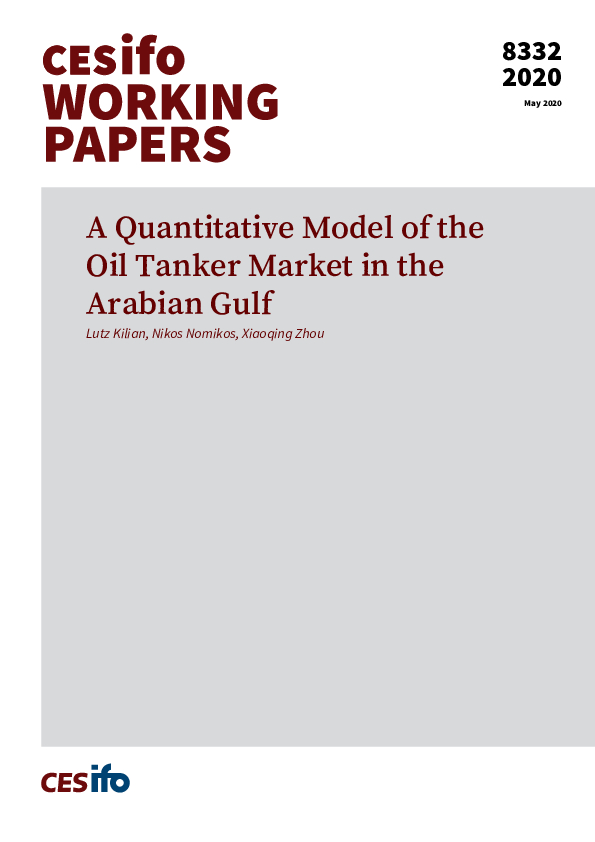A Quantitative Model of the Oil Tanker Market in the Arabian Gulf
CESifo, Munich, 2020
CESifo Working Paper No. 8332

Using a novel dataset, we develop a structural model of the Very Large Crude Carrier (VLCC) market between the Arabian Gulf and the Far East. We study how fluctuations in oil tanker rates, oil exports, shipowner profits, and bunker fuel prices are determined by shocks to the supply and demand for oil tankers, to the utilization of tankers, and to bunker fuel costs. Our analysis shows that time charter rates respond only slightly to fuel cost shocks. In response to higher fuel costs, voyage profits decline, as cost shocks are only partially passed on to round-trip voyage rates. Oil exports from the Arabian Gulf also decline, reflecting lower demand for VLCCs. Positive utilization shocks are associated with higher profits, a slight increase in time charter rates and slightly lower fuel prices and oil export volumes. Tanker supply and tanker demand shocks have persistent effects on time charter rates, round-trip voyage rates, the volume of oil exports, fuel prices, and profits with the expected sign.
Resources and Environment
Energy and Climate Economics